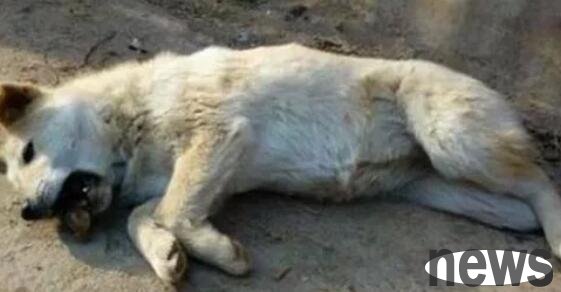For dogs, eating bones is a common thing, but why can’t some dogs eat bones? Or what about the bones that dogs can’t eat? These are things that dog owners need to pay attention to. If you are interested, you can take a look at the precautions for raising dogs and see why dogs cannot be fed bones?

After we refuted the rumor that dogs cannot eat more bones, many people who have owned dogs came out to explain: My dogs often eat bones, why don’t they have the problem you mentioned? Today’s refutation of rumors will start with the four dangers of dogs eating bones.
1. Excessive eating of bones in dogs can lead to malnutrition! For pet dogs who usually eat bland dog food as their main food, when they encounter bones with a unique meaty taste, they are absolutely red-eyed. So basically, the dog will eat as much as the owner gives it, without considering whether its own body can bear it. Compared with nutritionally balanced dog food, bones are mainly rich in calcium, and the only thing that can provide calories is some bone marrow, which is better than nothing. It’s not a big deal when eaten in small amounts, but once bones are used as the staple food, the problem is not that simple!
2. The fractures in the bones are very sharp and can scratch the dog’s intestines! In particular, the bones given to dogs by scrappers are often mainly bones from animals such as chickens, ducks, and fish, which are different from large bones such as pig bones, sheep bones, and cow bones. The bones of chickens, ducks and fish are slender and hard, and sharp faults will appear after being bitten off. Once swallowed, if the position is not good when swallowing, it is likely to scratch the intestines. This is a matter of probability. Even if someone feeds a dog chicken, duck, and fish bones for a long time, it may not happen once, but if it happens once, the probability is 100% that it will be injured!

3. Large bones are difficult to digest and accumulate in the stomach causing damage! Compared with thin bones scratching the intestines and stomach, there is another situation here, that is, after the dog encounters a large bone, it is likely to swallow the whole bone into the stomach because it cannot bite it open for a long time. Stomach acid can dissolve calcium in bones, just like chicken, duck, and fish bones will be dissolved entirely. However, even if one or two large bones cannot be dissolved, they can be excreted with a little pain when going to the toilet. But the fear is that too much is swallowed. Once it is deposited in the stomach, the problem will be big. The dog will not be able to eat normally and will become thinner day by day, which can be serious and life-threatening!
4. Dogs eating too many bones will cause excrement to become calcified. When you were a child, you may have seen the very hard white excrement excreted by the garden dog at home. This is actually the manifestation of calcium that the dog cannot digest and absorb and is excreted from the body. However, if these babies are too hard, they may cause anal prolapse, anorectal strain, constipation, etc. if the dog is not careful.
These four types of situations are the reasons why we usually don’t recommend feeding bones to dogs. The answer to parents who say that garden dogs have been eating bones for so many years and nothing has happened is actually very simple. First of all, pastoral dogs are more adaptable to our environment than pet dogs. Moreover, after parents have been feeding bones for thousands of years, dogs have not only evolved stomachs that are more adapted to such a diet, but also learned how to protect themselves. When a dog eats a certain amount of bones, we can actually see that the dog finds a place to hide the bones, one to save for later eating, and the other to protect its own body.
Pastoral dogs have received less attention in comparison. Like our country dogs, most of them rely on their own bodies to survive when they get sick! As for intestinal inflammation or other conditions caused by bones, owners often have nothing to do, so there are no cases of dogs being injured by eating bones.
Nowadays, there are so many pet dogs. These little guys have been eating soft and easy-to-digest dog food since they were young. Many dogs even have glass stomachs. If these pet dogs are treated with the bone-feeding method used to treat pastoral dogs, isn’t it obvious that problems will arise? After all, pet dogs are silly, how can they be as smart as our pastoral dogs?
Therefore, when it comes to giving bones to dogs, try not to give them thin bones to dogs. When eating chicken, it is better to try to pick out the broken bones inside. Medium-sized bones, such as those that can be swallowed by dogs in one bite, cannot be eaten by dogs, so only large bones such as cow leg bones are more suitable for dogs to grind their teeth. These little guys are our treasures, should we let them get hurt just because of a tiny bone?
Therefore, we should no longer be misled by inherent concepts, nor should we listen to the rumors from old people that dogs have been eating bones for several lifetimes without any problems. After all, rumors only stop with the wise. I believe everyone has gradually realized what dogs need to pay attention to when eating bones!
So, don’t feed bones. Just feed it scientifically. If you have a dog at home and don’t know how to feed it, you can learn more to prevent improper feeding.
